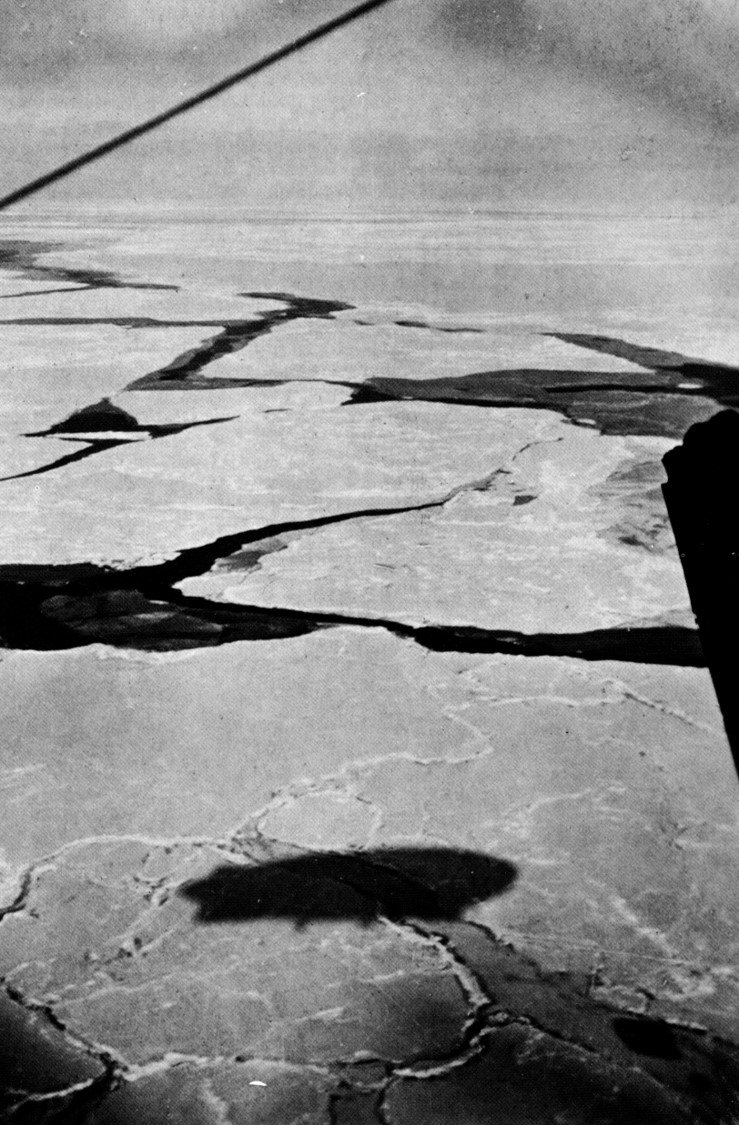Riiser-Larsen, hunched over a window with the sextant in his hands, was ready to seize the moment when the sun had peeped through the clouds, to catch the height. As the airship approached its much-desired destination, the excitement onboard grew, no one spoke, but impatience and contentment could be read in the faces. I called Alessandrini “Prepare the flag”. The Norwegian and American ones, attached to poles like banners, were ready in the control car. The Italian had to be removed from the hood and fixed to the rod prepared at King’s bay. At 1:30 am the sun’s height, which, from time to time, shone through the clouds warned that we were at the Pole. I headed the airship bow down to bring it as close to the surface of the endless sea of ice as possible: 150 or 200 meters. I slowed the engines. Their rhythm slowed so that the silence of the ice desert was felt more deeply. In this silence, the flags solemnly descended on the pack. It was May 12, 1926, at 1.30 am, Greenwich Mean Time. Having completed the ritual, with my heart swollen with joy and pride, I gave the engineers the order to accelerate the march while aiming the bow over the pole towards the unknown. Having flown over the Pole, the radiotelegrams had started announcing the launch of the three flags to the world, the onboard radio, a few hours later, was silent. It did not transmit anything for the rest of the journey and neither did he receive.
UMBERTO NOBILE., Ali sul Polo. Storia della conquista aerea dell’Artide, Mursia, 1975. P.159 (trad by R.R.)


